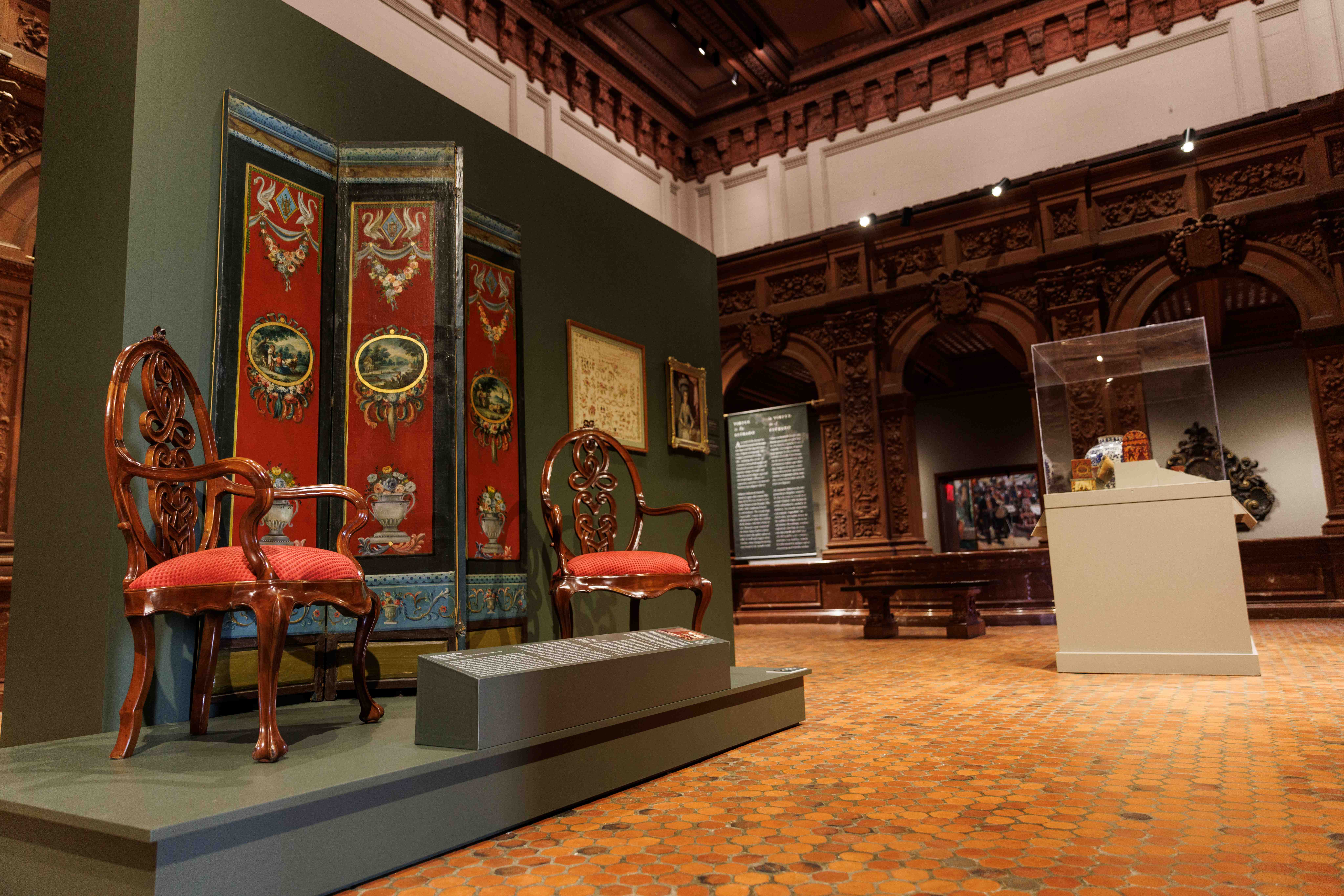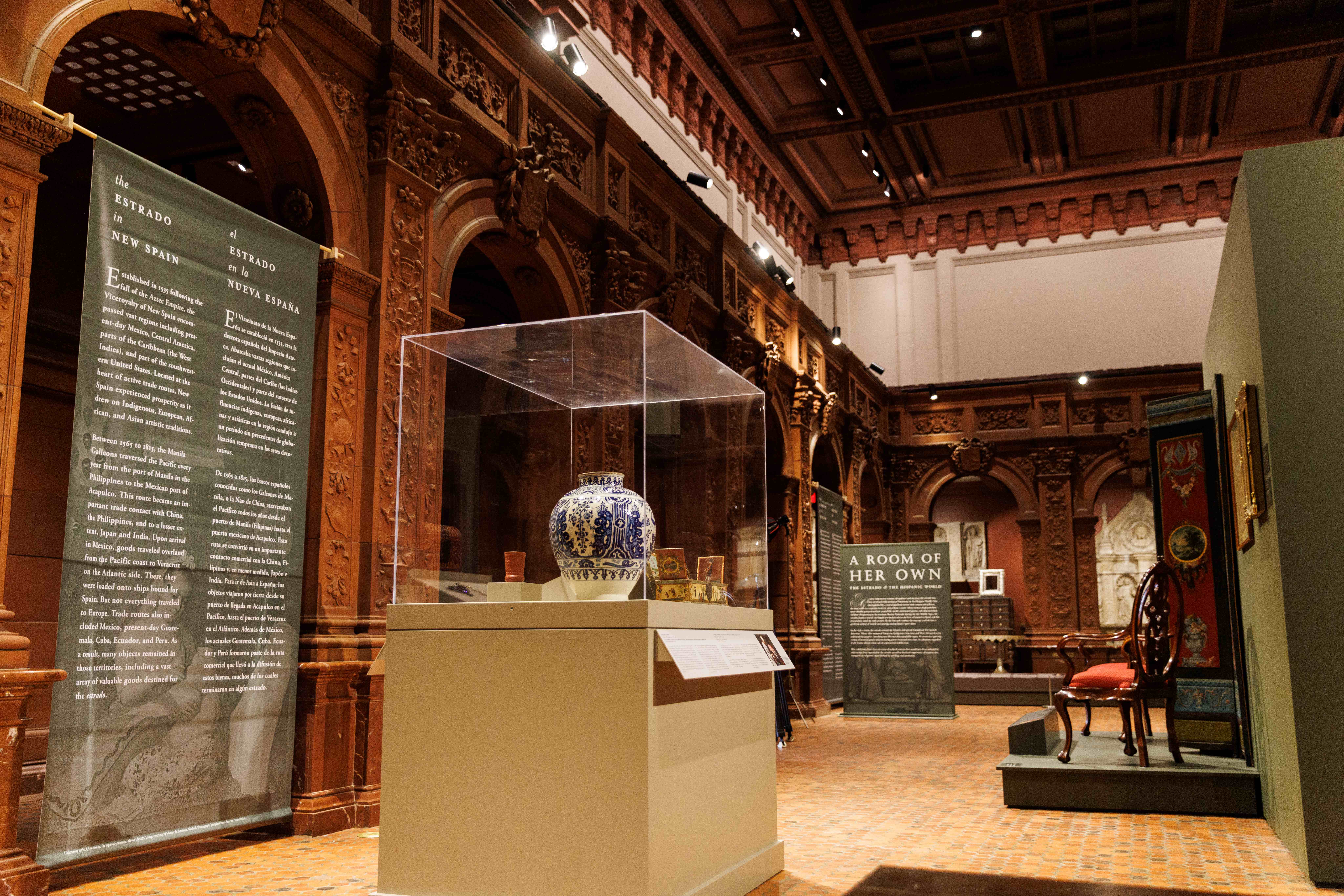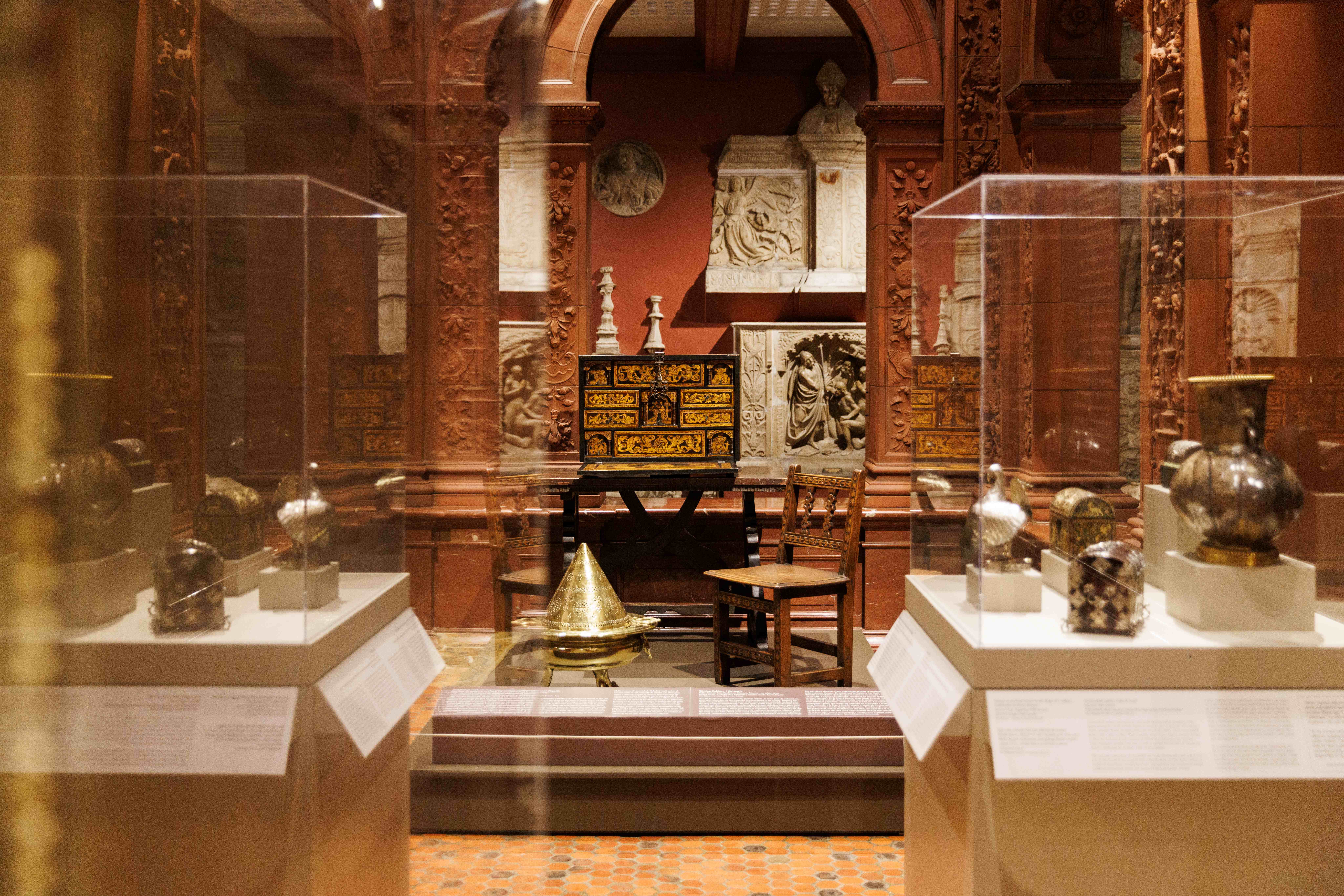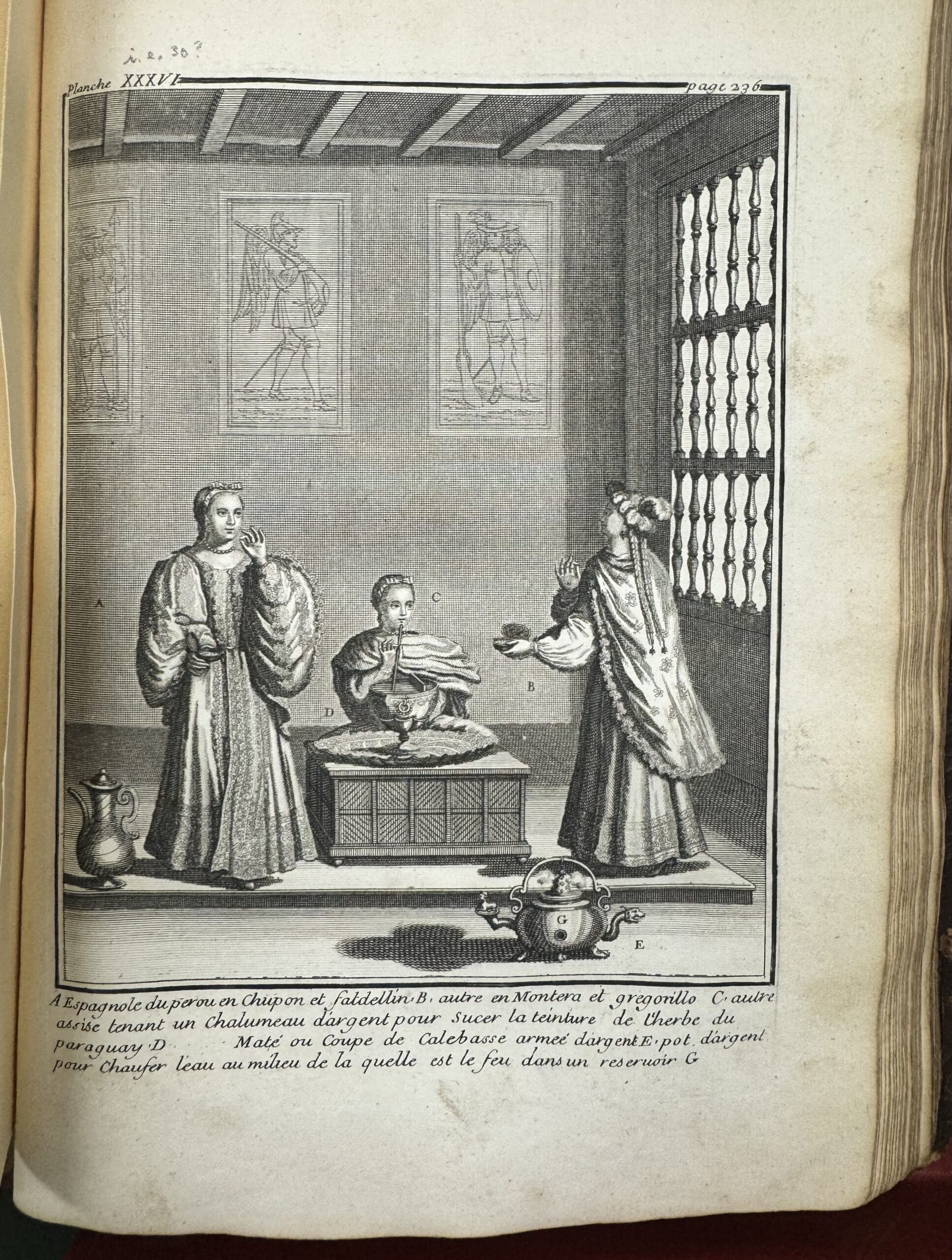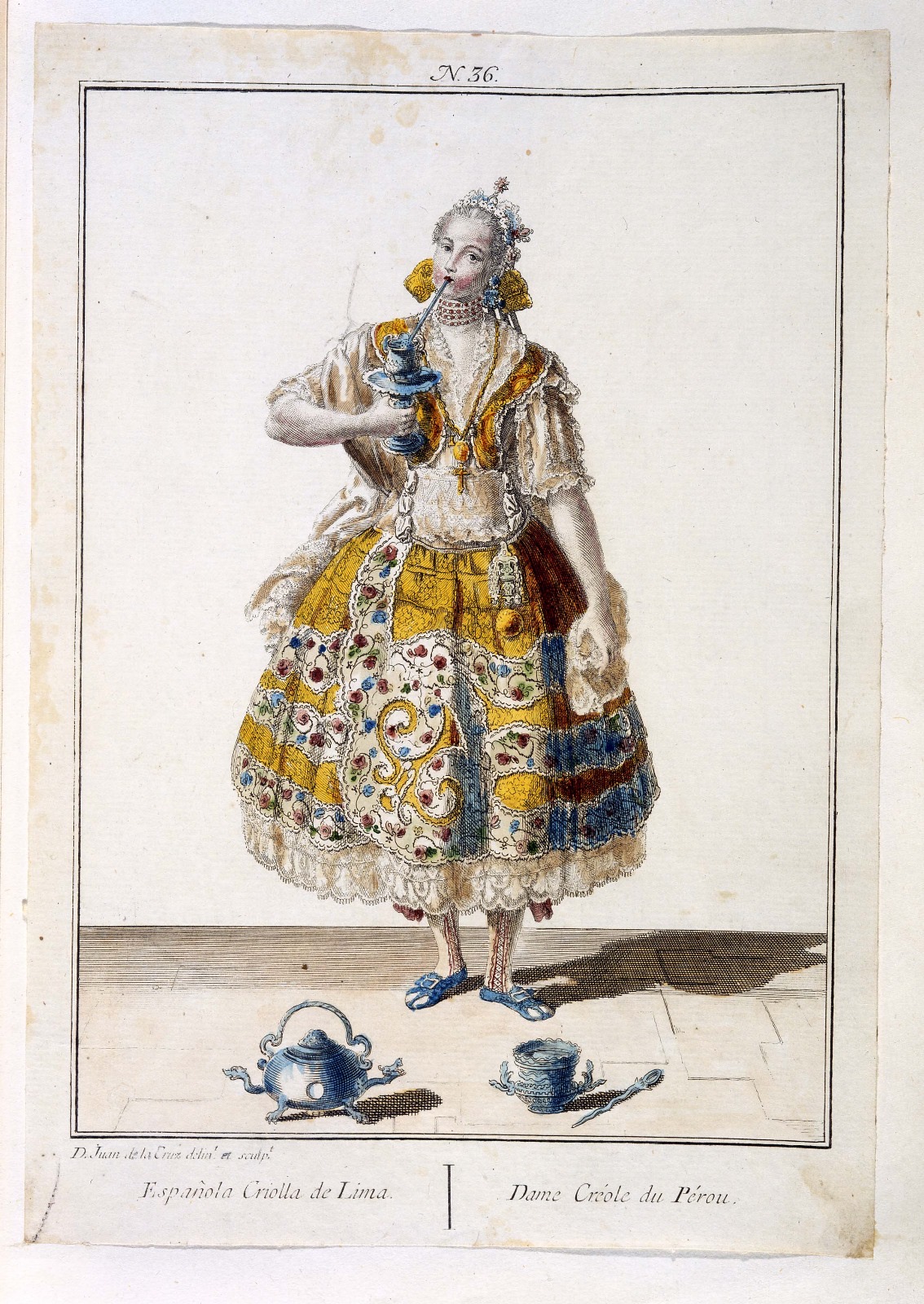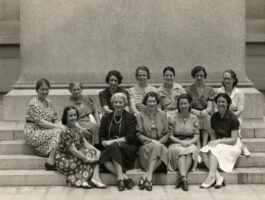Main Court: November 7th, 2024 to March 9th 2025
The Hispanic Society Museum and Library is proud to announce A Room of Her Own: The Estrado and the Hispanic World, a groundbreaking exhibition opening on November 7, 2024. The exhibition explores the rich history of the estrado—a woman’s private drawing room found in early modern Spain and the Spanish Americas—and illuminates the estrado’s long-overlooked role in female agency, social practices, and intercultural exchange. A Room of Her Own features decorative objects, paintings, textiles, rare books, and engravings from the Hispanic Society’s unrivaled collection, with many works on view for the first time.
This landmark exhibition traces the evolution of the sala de estrado from Islamic al-Andalus to the Americas, where it flourished until the collapse of the Spanish Empire. Described in the Diccionario de Autoridades (Madrid, 1732) as the “set of furniture used to cover and decorate the place or room where the ladies sit to receive visitors,” the estrado was a room or designated area where women engaged in elaborate social practices and displayed their collections of valuable objects from the Americas, Asia, and Europe.
The well-appointed estrado has long been a focal point of opulence and intrigue in traveler accounts, inventories, legal records and works of fiction. Designed for upper-class interiors and inhabited by elite women of European, Indigenous American and West African descent, the estrado paradoxically becomes a locus of female agency and subversion within a place of confinement. The exhibition engages a comprehensive array of archival sources and objects to question the values historically imposed on gender stereotypes and behaviors and highlights the estrado’s importance as a symbol of power, wealth, and virtue.
Curated by Alexandra Frantischek Rodriguez-Jack, Assistant Editor and Graphic Designer at the Hispanic Society, this exhibition presents decorative objects, paintings, rare books, and engravings from the Hispanic Society’s unrivaled collection in an entirely new light, with many works to be exhibited for the first time. Each artifact is meticulously contextualized through extensive research, offering visitors a nuanced understanding of women’s daily lives in the early modern world.
“This exhibition is the first of its kind to shed light on the estrado’s peculiar role as a platform of gendered power dynamics and female agency, while also tracing the trajectory of regional variations of the estrado and women-led collecting practices from the Iberian Peninsula to the Spanish Americas,” says Alexandra Frantischek Rodriguez-Jack, Guest Curator of the exhibition. “Significantly, this exhibition highlights the daily lives, habits, and domestic interiors of non-European women in the Spanish-speaking world—an area which historically has been overlooked. These women outfitted their estrados with expensive art objects and bespoke small-scaled furnishings to create these incredibly opulent and eclectic, maximalist spaces. The exhibition will feature a number of hidden gems from the Hispanic Society’s permanent collection, while demonstrating how these works interacted with each other in situ and facilitated various activities, ranging from bobbin lacemaking to witchcraft.”
A Room of Her Own explores localized patterns of elite female consumption, domestic display and collecting practices, culminating in the eighteenth-century concept of sociabilidad (“sociability”) associated with gendered consumption of luxury goods from the Americas, Asia and Europe. From the estrados of formal reception rooms to private bedchambers, women curated magnificent collections that bridged continents and cultures, bringing the outside world into these enclosed domestic spaces.
Since falling out of fashion in mid-nineteenth century, the sala de estrado has been largely forgotten, and there are no comparable exhibitions that delve into the enigmatic history of the estrado and its contents. The exhibition embraces current scholarly discourse through the material culture of gendered spaces, cross-cultural encounters, and marginalized populations, while taking a thoughtful, intersectional approach to gender, race/ethnicity, and socio-economic class in the Hispanic world. In conjunction with the exhibition, the Hispanic Society’s Education Department will host a series of allied programming, including live concerts featuring classical music from the Baroque period composed by women of Iberian descent, symposiums, family activities, guided tours, and panel discussions. Both the exhibition and related programming are free to the public. A Room of Her Own will engage with a diverse audience by fostering a dialogue around themes of culture and female agency, autonomy and identity-creation in the estrado.
Special Programs:
Monday, February 10th, 2025 | 6 to 8pm
A Sound of Her Own: Music in the Time of the Estrado
Dr. Elizabeth Weinfield brings Sonnambula, a historically-informed ensemble that brings to light unknown music for various combinations of early instruments with the lush sound of the viol at the core, to the Hispanic Society to perform a program inspired by the exhibition “A Room of her Own: The Estrado and the Hispanic World.” Featuring a pre-concert discussion between Elizabeth Weinfield and Alexandra Frantischek Rodriguez-Jack, curator of the exhibition “A Room of Her Own: The Estrado and the Hispanic World”


